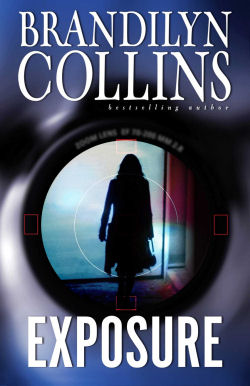|
If
you’re attending the ACFW conference this month, or if you’re querying
agents, you may be struggling with how to create a pitch for your
story. The guidelines below can help.
First, remember that a pitch is
a hook. It has one goal only: to make the editor
(or agent) at the conference want to know more about your story. Just
as a chapter hook makes the reader turn the page, your pitch hook makes
the editor ask a follow-up question. (Sometimes editors will ask a
follow-up question simply to be polite. The trick is making them ask a
question because they really are curious about the
answer.)
Therefore, a pitch doesn’t have
to cover lots of information about your story. On the contrary, it
should be concise. And it shouldn’t focus on theme. It should focus on specifics
in your premise that will place questions in the editor’s
mind.
You have to put yourself in the
shoes of the editor, who’s heard a million pitches. What will make this
editor want to know more about your story? Certainly not generalities.
Nor themes. These things don’t lead to specific questions. Besides, all
generalities and themes have been done before. The editor will think,
“Ho-hum.” You need to give him something fresh.
Let’s look at examples from my
one of my suspense novels, Violet Dawn. First, a
generalized pitch:
A lonely young woman
runs from her dangerous past only to come face-to-face with murder.
Boring. There’s nothing fresh
here. Nothing that’s going to make the editor want to know more. How
many books are about people running from their pasts? How many books
have a protagonist mixed up in murder?
Okay, so let’s try a theme-based
pitch:
A lonely young
woman—who’s
running from her dangerous past and becomes mixed up in murder—learns
how to build a family.
Even more boring. First, the
reasons stated above apply. Second, the “learns” part actually
diminishes the painful past and murder elements. I’ve just skimmed over
the major conflicts to make everything all neat and tidy.
Now,
here’s a specific pitch based solely on the premise. One designed to
make the editor ask a follow-up question:
A young woman running
from her dangerous past discovers the body of an aged movie star in her
hot tub--and can’t call the police.
This pitch would likely place two
questions in the editor’s mind. One—why can’t she
call the police? Two—if she can’t tell police about the body, what’s
she going to do about it?
|
If
I were pitching this at a
conference, I’d have responses ready for those two follow-up questions.
I wouldn’t design the responses to fully answer the questions. Rather,
I’d design each response to give a partial answer, with
another hook. (Note: your response to a follow-up question
can be longer than your original pitch. But still be as concise as
possible.)
Editor question #1: “Why can’t
she call the police?”
Response: “She doesn’t trust the
police to believe in her innocence. And this crime will bring national
media. She can’t have her face plastered on the news—because the people
she’s running from will find her.” (Inherent hooks: Well, who’s she
running from? What happened in her past?)
Editor question #2: “So what
does she do about the body?”
Response: (I would tell the
editor, but choose not to reveal the answer in this article—spoiler for
those who haven’t read my book but will.)
If you’re not attending a
conference but you’re preparing a query letter to an agent, create your
basic pitch in the same way. In this case, you’re hooking the agent to
read on—with the goal of prompting her to ask you to submit part or all
of the manuscript. You can put this pitch in the very first sentence of
your query. I went further years ago when I was looking for an agent. I
bolded and centered the pitch right after the salutation. Sometimes I
even put a box around it. That way, in one second, the agent would know
the gist of my story—and, I hoped, be hooked. Querying a list of agents
can often lead to only a small percentage of requests for more of the
manuscript. But this method of developing a compelling, concise pitch
and putting it right at the top resulted in over 50 percent positive
response for me. Ultimately I landed with the agent of my choice.

|